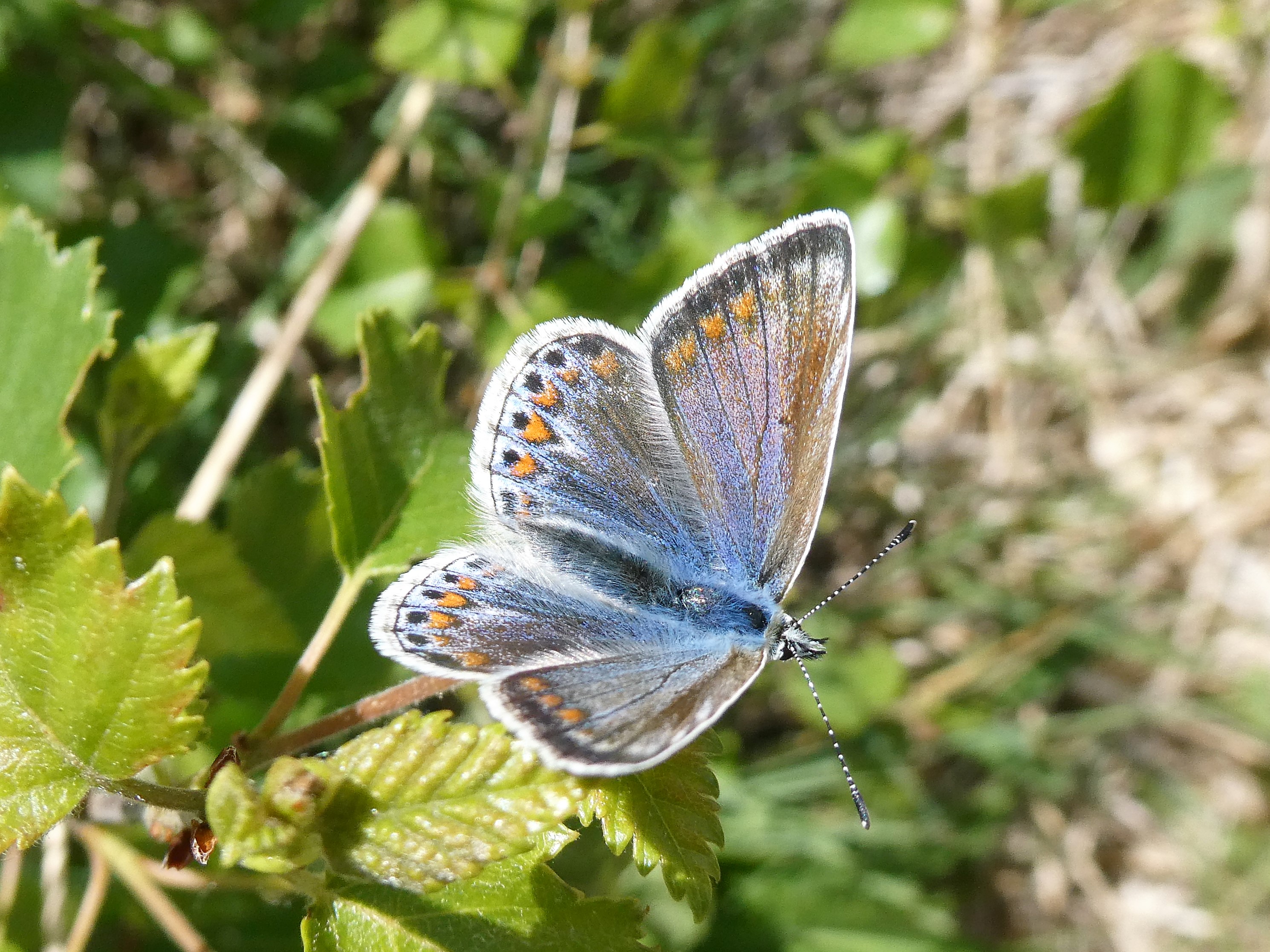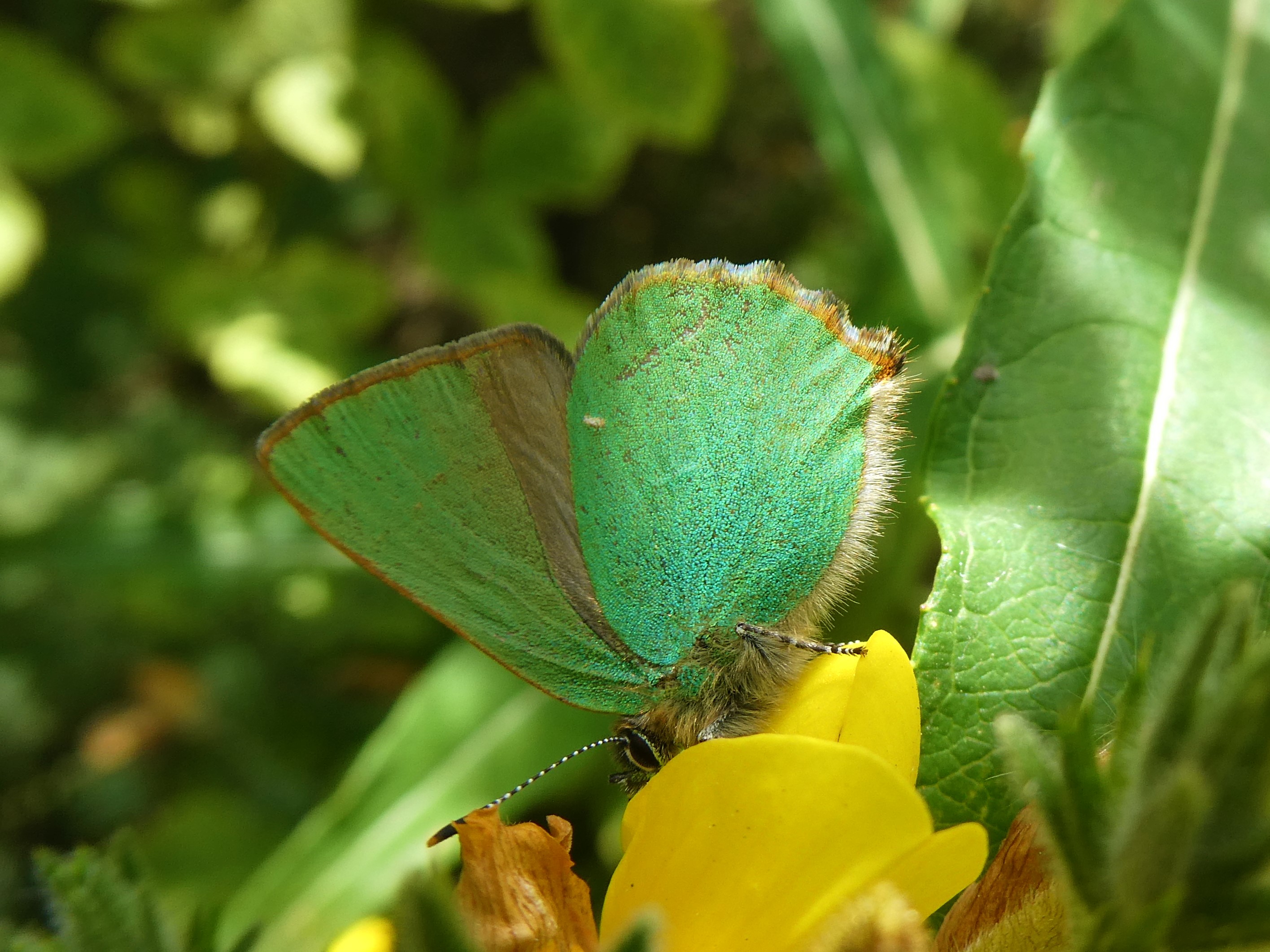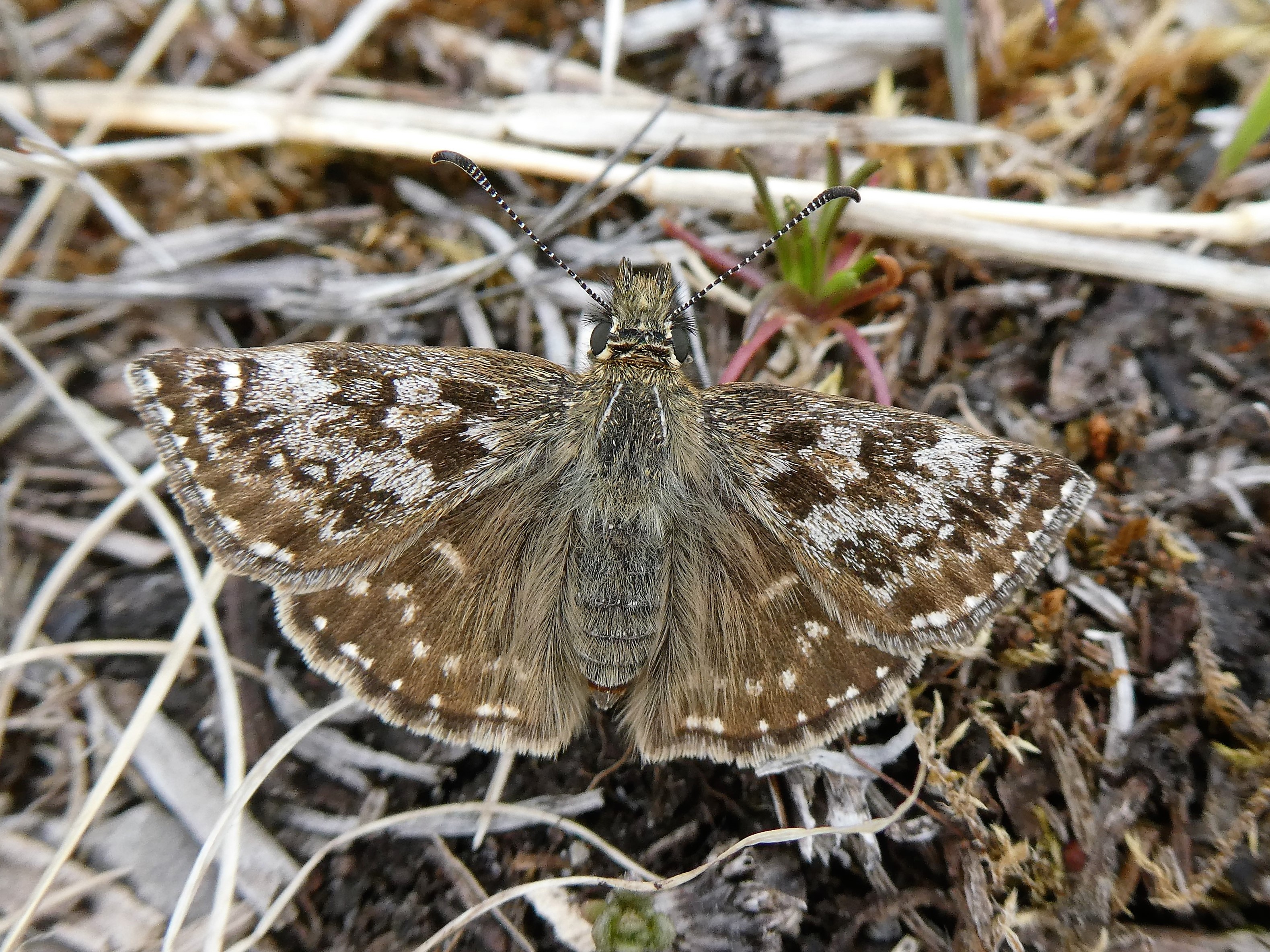May is the final month of spring and perhaps the fulfilment of the season. May has 22 butterflies in flight so there is so much to see. Admittedly, some, such as the Brimstone, Peacock and Small Tortoiseshell are on the wane but others, such as the Common Blue, Dingy Skipper, Marsh Fritillary, Small Copper and Green Hairstreak are in their palmy days. These are shown below. Which do you think is the most beautiful?
Few would opt for the Dingy Skipper but I like it! While very muted, the pattern is subtle and intricate, like embroidery. The butterfly also has a teddy bear appearance, a cuddly, friendly-looking butterfly. It is not at all common in Ireland, found mainly in scattered locations in a band across central Ireland stretching mainly in a line from north Clare to south Mayo and across the country towards but not including Dublin (it was found in Dublin in the past). It favours limestone areas with plenty of bare soil, rocky areas and cutaway bogs with dry areas with bare, sparsely vegetated peat. It is a low-flying and fast-flying butterfly. The males react to the appearance of any small butterfly by darting out to investigate it. Males fight each other and other butterflies, such as Common Blues and Small Coppers while mated females keep a low profile, dropping into vegetation when pursued by a male. After he gives up she flutters low over the sparse turf seeking out Common Bird’s-foot-trefoil to lay her eggs.
The Common Blue is an obviously attractive and very active conspicuous inhabitant of unfertilised grassland, with males dashing across the turf, chasing other males and females. A point of interest is the sexual dimorphism in the butterfly with the females very variable in the amount of blue scaling on its upper surfaces. Some females are almost fully brown on the upper surfaces of their wings while at the other extreme some females are fully blue aside with the outer edges which contain orange chevron markings which vary in how well defined these are.
Now we move on to the Marsh Fritillary. This species is widely distributed but endangered. Its colonies are usually small, with sites quite small in area but there are usually a group of colonies in a landscape that is connected by individuals flying between the breeding sites in some years, especially in 2018 when prolonged good weather encouraged dispersal. The Marsh Fritillary has a large European range and is very variable in appearance. I know of no more attractive form than the one we have in Ireland where many individuals have a stronger contrast between the dark and bright colours on the wings than the butterflies found in Europe where a more uniform orange ground colour dominates the upper surfaces. Appreciate this lovely butterfly if you are in a position to see it-it is highly localised and badly neglected by the state which is supposed to protect it. For example, Ireland has designated 16 Natura 2000 sites (a network of nature protection areas in the European Union) for the Marsh Fritillary. Of these areas, it is absent or only sporadic in its occurrence in at least five of the sites. In two of these sites, Ballynafagh Lake and Killarney National Park the butterfly has been extinct for over 20 and 30 years respectively. In addition, some large sites with large populations of the butterfly have no legal protection, such as Yellow Bog, west of Loughrea.
The Small Copper is, happily, a common and widespread but rarely abundant butterfly. Although much of the literature states that it is usually found in small numbers, it can be abundant with some good sorrel-rich sites showing 50 or more butterflies in a single count-always exciting to see this shining copper in numbers. It is very vulnerable to fertiliser application-even if sorrels survive the butterfly disappears. In unfertilised fields, even on grasslands that are heavily grazed, it appears year after year while it disappears even from adjoining fertilised areas containing the same habitat.
A very elusive spring butterfly which is rarely seen by most is the Green Hairstreak. This butterfly always settles with closed wings but its upper surfaces are chocolate brown. When in flight it looks brown so observers should look for a brown butterfly tumbling and spinning at a great pace in the sunshine. Tap gorse or willow at the drier areas of a bog and step back-it usually flies out immediately but often returns to its original perch point. It is a dynamic, aggressive butterfly and is often abundant in discrete areas of its boggy habitats. It can also be found on open bog but usually occurs on bogs containing scrub. The worry for this still widespread butterfly is drainage and destruction of peat bogs-these must be protected to preserve this gorgeous species.







